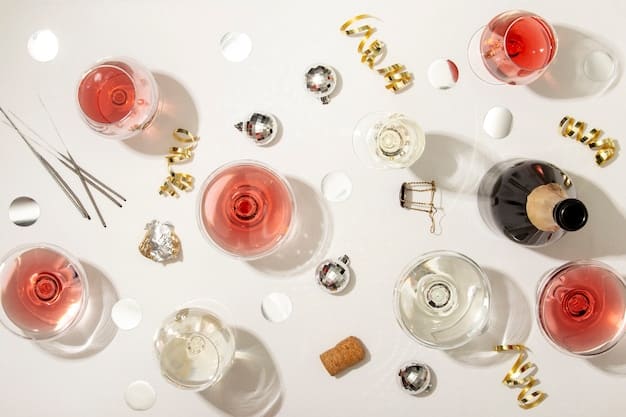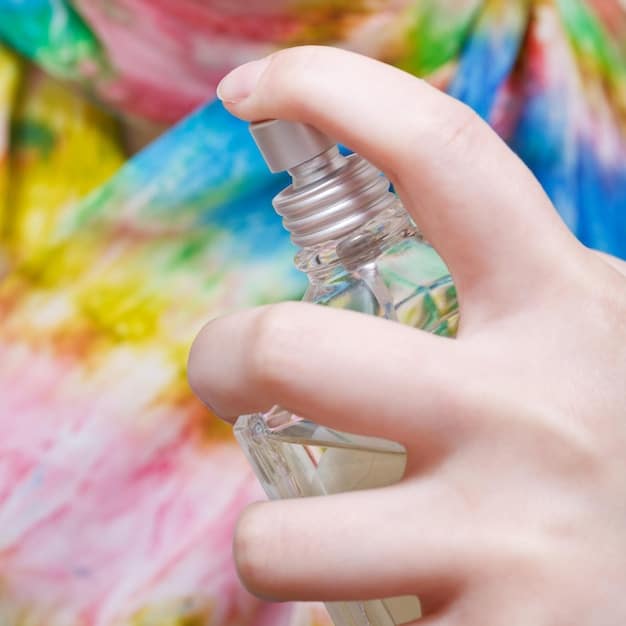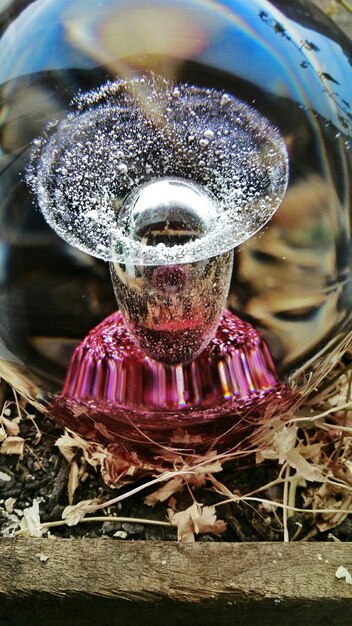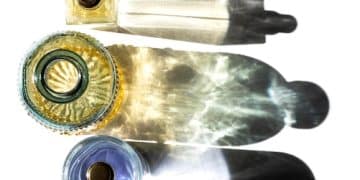Unlock Your Signature Scent: Fragrance Layering Techniques

Fragrance layering is the art of combining multiple perfumes to create a unique, personalized scent profile that reflects your individual style and enhances the longevity and complexity of your favorite fragrances.
Discover the transformative power of fragrance layering: expert techniques for creating unique scents with 3+ complementary perfumes. Elevate your fragrance game by learning how to blend scents like a pro, crafting a personal aroma that’s uniquely you.
Understanding the Basics of Fragrance Layering
Fragrance layering might seem intimidating at first, but with a bit of knowledge, it becomes an enjoyable process of self-expression. The key lies in understanding fragrance families and how they interact with each other.
Before diving into specific techniques, it’s essential to grasp the fundamental principles behind combining different scents. This involves recognizing fragrance families and their compatibility, as well as understanding how fragrances evolve on your skin.
Fragrance Families and Compatibility
Fragrance families are categories that group scents with similar characteristics. These families include floral, woody, oriental, fresh, and spicy. Knowing which families harmonize well together is crucial for successful layering.
For instance, floral and fresh scents often complement each other, creating a light, airy aroma suitable for daytime wear. Woody and oriental scents, on the other hand, can combine to produce richer, more complex fragrances ideal for evening occasions.
Understanding Fragrance Evolution
Fragrances evolve over time, revealing different notes as they interact with your skin. Top notes are the initial scents you perceive, followed by middle notes that emerge after a few minutes, and base notes that linger for hours. Layering fragrances effectively requires considering how these notes will blend and evolve together.
- Experiment with Single Notes: Start by layering single-note fragrances, such as vanilla or rose, to understand how they interact with your skin and other scents.
- Consider the Occasion: Choose fragrance combinations that are appropriate for the occasion. Lighter, fresher scents are ideal for daytime, while richer, more complex scents are suitable for evening events.
- Apply Correctly: Start with the heavier scent first and then layer the lighter scent on top.
In essence, fragrance layering is about harmonizing different elements to create a symphony of scents that resonate with your personality and style. A solid understanding of fragrance families and scent evolution is, therefore, invaluable.

Expert Techniques for Layering Perfumes
Mastering fragrance layering involves adopting specific techniques used by perfumers and fragrance enthusiasts. These techniques can enhance the longevity and overall impact of your personalized scent.
Several expert techniques can help enhance the impact of your layered fragrances. These include strategic application methods and understanding the intensity of different scents.
Strategic Points of Application
Applying fragrances to strategic points on your body can significantly impact their longevity and projection. Pulse points, such as wrists, neck, and behind the ears, generate heat, which helps to diffuse the scent over time. Layering fragrances on these points can create a more lasting and noticeable aroma.
Additionally, consider applying fragrances to your hair or clothing for a more subtle and extended release. However, be cautious when spraying directly onto delicate fabrics, as some fragrances may cause staining.
Layering Intensity
Balancing the intensity of different fragrances is crucial for creating a harmonious blend. Start with lighter, more delicate scents and gradually introduce bolder, more concentrated fragrances. This approach prevents any single scent from overpowering the others.
Experimenting with different concentrations, such as eau de toilette and eau de parfum, can also help achieve the desired balance. Applying a lighter concentration first, followed by a more concentrated scent, can create a layered effect that evolves beautifully over time.
- Start with a Base: Use a light body lotion or oil as a base to help the fragrances adhere to your skin and last longer.
- Layer Similar Scents: Combine fragrances from the same fragrance family to create a more coherent and harmonious blend.
- Avoid Overlapping: Be mindful of where you apply each fragrance to avoid creating a muddled or overwhelming scent.
Ultimately, the best method to become proficient in fragrance layering is through practice and exploration. Understanding how to apply fragrances strategically and balance their intensities is key to producing a personalized aroma that is both captivating and subtle, thus creating a signature scent.
Creating Unique Scent Combinations
The most exciting aspect of fragrance layering is the ability to create unique scent combinations that reflect your personality and style. Experimenting with different scents can lead to surprisingly delightful discoveries.
Creating unique scent combinations can be an exhilarating and rewarding experience. It involves experimenting with different fragrances and understanding how they interact to create something entirely new.
Floral and Fruity Blends
Combining floral and fruity scents can result in a refreshing and vibrant aroma that is perfect for everyday wear. Layering a light floral fragrance, such as jasmine or rose, with a fruity scent like citrus or berry, can create a balanced and uplifting blend.
For example, layering a rose-based perfume with a grapefruit-scented fragrance can produce a sweet and tangy aroma that is both feminine and invigorating. This combination is ideal for springtime or any occasion where you want to feel refreshed and energized.
Woody and Spicy Combinations
Woody and spicy combinations create a warm and sensual aroma that is perfect for evening wear. Layering a woody scent, such as sandalwood or cedarwood, with a spicy fragrance like cinnamon or cardamom, can produce a complex and captivating blend.
A combination of sandalwood and cardamom can create a fragrance that evokes feelings of coziness and sophistication. This blend is perfect for cooler months or any event where you want to make a lasting impression.
- Mix and Match: Don’t be afraid to experiment with unexpected combinations. The most unique scents often come from unconventional pairings.
- Consider the Season: Certain fragrance combinations are better suited for specific seasons. Lighter, fresher scents are ideal for spring and summer, while richer, warmer scents are perfect for fall and winter.
- Test on Skin: Always test your fragrance combinations on your skin to see how they evolve and interact.
Ultimately, creating unique scent combinations offers a way to express your individuality through fragrance. Floral and fruity blends can create a refreshing and vibrant aroma, while woody and spicy combinations provide warmth and sensuality, allowing you to discover combinations that beautifully reflect your personal style.

Common Mistakes to Avoid When Layering Fragrances
While fragrance layering can be a creative endeavor, it’s essential to be aware of common mistakes that can lead to unpleasant or overpowering results. Avoiding these pitfalls ensures a more enjoyable and successful scent layering experience.
Although fragrance layering offers creative possibilities, it’s crucial to avoid typical pitfalls that could result in an overwhelming or unpleasant scent profile.
Overlapping Conflicting Scents
One of the most common mistakes is layering scents that clash with each other. Combining two strong and distinct fragrances without considering their compatibility can result in a muddled and overwhelming aroma. For example, layering a heavy oriental scent with a sharp citrus fragrance may create an unbalanced and unpleasant combination.
To avoid this, it’s crucial to understand the fragrance families and their compatibility. Stick to layering scents that complement each other, or start with a neutral base to harmonize different fragrances.
Overapplication
Applying too much fragrance can be overwhelming for those around you. When layering scents, it’s essential to be mindful of the quantity. Overapplying multiple fragrances can create a potent and suffocating aroma that is far from inviting.
Start with a light application of each fragrance and gradually build up the intensity to achieve the desired effect. Remember, less is often more when it comes to fragrance layering.
- Layer one fragrance at a time and let it meld.
- Spritz from a distance to cover a larger surface area.
- Get input from others to gauge the strength.
Avoiding these common mistakes, such as overlapping conflicting scents and overapplication, is key to a successful fragrance layering experience. Understanding fragrance compatibility and applying fragrances strategically can lead to an individual scent that’s appealing and unique.
Choosing the Right Perfumes for Layering
Selecting the right perfumes for layering is crucial for achieving a harmonious and well-balanced scent. Not all fragrances are created equal, and some are better suited for layering than others.
The foundation of successful fragrance layering lies in selecting the right perfumes. Not all fragrances interact favorably, and some are better suited for layering due to their composition and character.
Understanding Notes and Accords
Perfumes are composed of various notes, each contributing to the overall scent profile. Top notes are the initial scents, middle notes emerge after a few minutes, and base notes linger for hours. An accord is a harmonious blend of notes that create a distinct scent. Understanding these elements can help you choose fragrances that complement each other.
For instance, layering fragrances with similar base notes can create a cohesive and long-lasting aroma. Combining perfumes that share a common accord, such as a floral or woody accord, can also result in a harmonious blend.
Considering Longevity and Projection
Longevity refers to how long a fragrance lasts on your skin, while projection refers to how far the scent travels. When choosing perfumes for layering, consider their longevity and projection to ensure that the combination evolves beautifully over time.
Layering a long-lasting base fragrance with a shorter-lasting top fragrance can create a scent that evolves dynamically throughout the day. Similarly, combining fragrances with varying projections can create a layered effect that is both subtle and captivating.
- Read Reviews: Look for perfumes that are known for their layering capabilities and versatility.
- Consider Strength: Pick fragrances with varying strengths. Stronger scents should be applied sparingly.
- Opt for Simplicity: Complex scents don’t always layer well and can create a confusing fragrance.
Selecting the right perfumes involves understanding fragrance structures, and considering both longevity and projection to ensure that your custom scent evolves over time. By carefully researching and selecting these elements, you can develop a sophisticated, layered fragrance.
Storing Your Fragrances Correctly
Proper storage is essential for preserving the quality and integrity of your fragrances. Exposure to light, heat, and humidity can degrade the scent and shorten its lifespan. Storing your perfumes correctly ensures that they remain fresh and vibrant for years to come.
Preserving the integrity of your perfumes requires proper storage to protect them from environmental factors that can compromise their quality.
Avoiding Direct Sunlight
Direct sunlight can cause fragrances to break down and lose their scent. UV rays can alter the chemical composition of the perfume, leading to a noticeable change in aroma and potency. Store your perfumes in a dark, cool place to protect them from direct sunlight.
Consider storing your fragrances in a drawer, cabinet, or closet to shield them from harmful UV rays. Using opaque bottles can also help prolong their lifespan.
Maintaining a Consistent Temperature
Fluctuations in temperature can also degrade the quality of your perfumes. Extreme heat or cold can alter the chemical bonds within the fragrance, resulting in a change in scent and consistency. Maintain a consistent temperature to preserve the integrity of your fragrances.
Avoid storing your perfumes in areas that are prone to temperature changes, such as bathrooms or near windows. A stable, moderate temperature is ideal for long-term storage.
- Keep in Original Bottle: The original container is designed to avoid light and air.
- Avoid Humidity: Humidity can alter fragrances, so avoid storing perfumes in the bathroom.
- Cool and dark is best: If possible find a place to store any fragrances that is cool and dark.
In the end, proper storage helps ensure that your perfumes remain usable for as long as possible. Avoiding direct sunlight and maintaining a consistent temperature are critical in this process, as is storing perfumes properly after each use to prolong their shelf life.
| Key Aspect | Brief Description |
|---|---|
| 💡 Fragrance Families | Understand families (floral, woody, etc.) for harmonious layering. |
| 📍 Application Points | Apply to pulse points (wrists, neck) for optimal scent diffusion. |
| 🧪 Scent Intensity | Layer lighter scents first, then bolder ones to avoid overpowering. |
| ☀️ Storage Tips | Store fragrances away from direct sunlight and temperature fluctuations. |
Frequently Asked Questions
▼
Begin with lighter, single-note fragrances to understand how they interact with your skin and other scents. This approach helps you grasp the basics without overwhelming your senses, allowing for more controlled experimentation.
▼
Not all perfumes blend harmoniously. It’s best to combine fragrances from complementary families or those that share common notes. Avoid mixing drastically different scents to prevent an unbalanced aroma.
▼
Start with two to three fragrances. This allows you to create a complex yet manageable scent. As you gain experience, you can experiment with more layers, but always ensure each fragrance complements the others.
▼
Apply the heavier scent first as a base, and then layer the lighter scents on top, focusing on pulse points like your wrists and neck. This helps the fragrances evolve beautifully without any single note overpowering the blend.
▼
Use a moisturizing base like a non-scented lotion or oil before applying your fragrances. This helps the scents adhere to your skin better and increases their longevity. Also, consider layering a fragrance with a similar body lotion or oil.
Conclusion
Fragrance layering, expert techniques for creating unique scents with 3+ complementary perfumes, opens up a whole new world of scent possibilities, allowing you to craft a personalized aroma that reflects your style and personality. By understanding the fundamentals, mastering expert techniques, and avoiding common mistakes, you can create signature fragrance combinations that leave a lasting impression.





